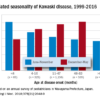Rethinking preop testing
ORLANDO – Michael Rothberg, MD, a nocturnist who works at Presbyterian Rust Medical Center in Albuquerque, often is torn when asked to routinely perform preoperative tests, such as ECGs, on patients.
On the one hand, Dr. Rothberg knows that for many patients there is almost certainly no benefit to some of the tests. On the other hand, surgeons expect the tests to be performed – so, for the sake of collegiality, patients often have tests ordered that hospitalists suspect are unnecessary.
This was a big part of why Dr. Rothberg decided to come a day early to HM18, held in early April in Orlando, to attend the pre-course “Essentials of Perioperative Medicine and Co-Management for the Hospitalist.” He was looking for expert guidance on which patients need what tests before surgery, and also how to better determine what preoperative tests are a waste of time and money for certain patients, so that he’ll be armed with useful information when he went back to his medical center.
“I can slap something on the surgeon’s desk and say, ‘Here’s why we’re not doing it,’ ” Dr. Rothberg said.
At the HM18 pre-course, experts gave guidance on the benefits of hospitalist involvement in perioperative care and offered points to consider when assessing cardiac and pulmonary risk before surgeries. Hospitalists then broke into groups to brainstorm techniques that could improve their perioperative work.
Pre-course director Rachel Thompson, MD, MPH, SFHM, head of the section of hospital medicine at the University of Nebraska in Omaha, pointed to the enormous swath of surgical care that could benefit from hospitalist involvement. In the United States, at least 52 million surgeries a year are performed, with 9 surgical procedures per lifetime on average. Of the 50,000 hospitalists in the United States, 87% are involved in preoperative care, she said.
She noted how surgical safety checklists have been shown to improve morbidity and mortality, as seen with a checklist developed by the World Health Organization and in California, where an enhanced recovery program at 20 hospitals has been successful.







